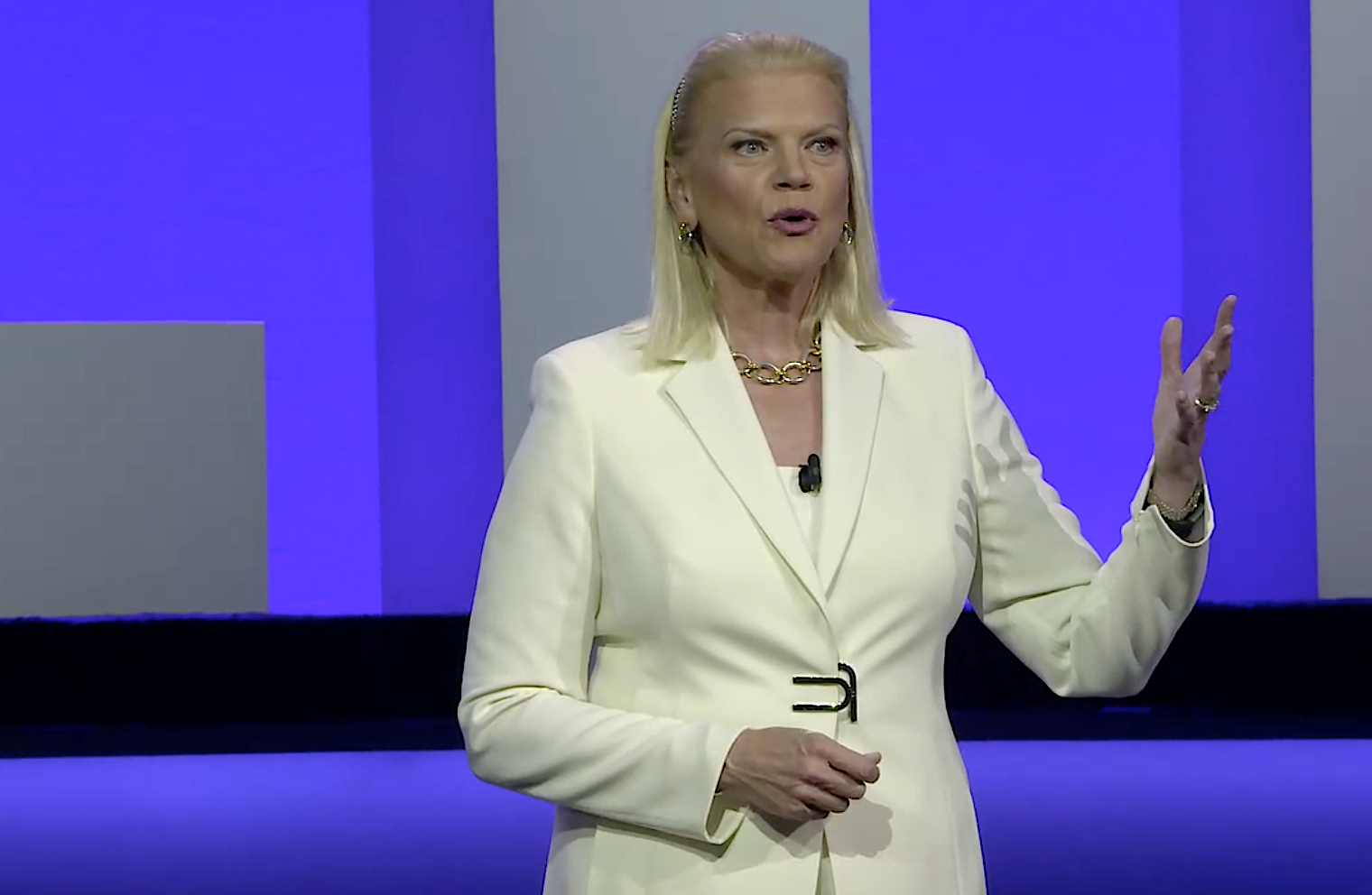 CLOUD
CLOUD
 CLOUD
CLOUD
 CLOUD
CLOUD
IBM Corp.’s flagship technology conference Think in San Francisco attracted 30,000 people this week and, by midafternoon on Tuesday, it appeared that every single one of them was trying to enter the convention hall where Chief Executive Ginni Rometty was scheduled to deliver a major address.
After getting a closeup view of the traffic-snarled streets and lines that snaked around the block on her way into the venue, Rometty (pictured) took the stage and immediately declared, “This is the closest I’m ever going to feel to having an iPhone launch.”
The line received a hearty laugh from the packed hall of attendees, who know Apple occupies another plane of marketing existence than IBM, but it carried an appropriate message as well. IBM events may not reach the pandemonium that greets an Apple Inc. announcement, but on the other hand, it’s clear that the enterprise computing Big Blue represents is only gaining in importance in the cloud era.
“We are all standing at the beginning of chapter two of this digital reinvention,” Rometty said. “Chapter two in my mind will be enterprise-driven.”
For IBM, that reinvention started with $34 billion, the amount the company paid in October to purchase the open-source software and technology company Red Hat Inc. The acquisition was viewed by some observers as IBM’s move to gain a foothold in the multicloud world through partnership, but details on precisely how the two companies would integrate portfolios and progress forward have been sketchy at best. Shareholders greenlighted the acquisition last month, but the deal may not officially close until the second half of this year.
Rometty was joined on the keynote stage by Red Hat CEO Jim Whitehurst and the two engaged in a conversation that provided a few hints but did not yield any major announcements.
Red Hat has played a significant role in the open-source world, and many of the tools designed to process and transfer data at the edge are being developed in this ecosystem. As a result, IBM could be poised to capitalize on the move toward edge computing and growth in the world of containers, the software capsules that allow applications to run on multiple kinds of computers and operating systems.
Whitehurst addressed this potential in his brief remarks, speaking about Linux and the rise of containerized services. “That is where the vast amount of innovation is happening,” he said, using data-generating autonomous cars as a prime example of how Red Hat and IBM could combine forces to write a new chapter in infrastructure at the edge. “The combination of what we can do together is really exciting.”
Whitehurst also described his belief that the technologies powered by his company’s open-source tools hold enormous potential for the future of enterprise computing. “The real value is when your data and processes that you have can leverage this set of technologies,” he said. “What we try to do is make open innovation consumable for enterprise.”
If specifics about the integration of Red Hat into IBM’s business plan may have been in short supply on Tuesday, Rometty and her company had plenty to say about artificial intelligence. During the first two days of the conference, IBM made several AI-related announcements, the most significant of which was that Watson will be made available for use on any cloud.
“This is in response to what you told us about data,” Rometty said in reference to customer feedback seeking flexibility to move information between cloud platforms. “This will be the most open, scalable AI for business in the world.”
Rometty also teased the audience with an allusion to AI research at IBM. Last week, the company announced plans to open a research hub dedicated to the development of next-generation AI hardware.
“The biggest thing we’re working on is how to get AI to learn with less data,” said Rometty, who also indicated that additional research-related AI news was “soon to be coming out.”
Rometty took time to articulate her vision for the AI industry in general. In addition to the core research that IBM is conducting to improve AI tools, the company is also focused on what Rometty described as “Trusted AI” and “Scaling AI.”
Mindful of the hit the technology industry has taken recently over the loss and misuse of user data, IBM recently launched a software service to scan systems using AI for bias detection. “Being trusted means to repair society, to live and work in this age so that no one is left behind,” she said.
IBM also announced this week that it would merge its PowerAI server line with Watson to accelerate machine learning training. The company’s announcement claimed a 46 times acceleration rate through this move, but IBM had bigger plans for future advancement.
“This is AI to automate AI,” Rometty said. “Our aim is to make it a thousand times more efficient to do this.”
The rollout of new AI tools and the promise of Red Hat’s open-source technology to reshape the enterprise signifies IBM’s interest in being a big part of the computing conversation in the years ahead.
But it will be a challenge, and not just because of all the competition from cloud giants such as Amazon Web Services Inc. and Microsoft Corp. Many enterprises are still grappling with the complexities of cloud computing on which Rometty is betting IBM’s future. Bernard Tyson, chairman and CEO of Kaiser Permanente, for example, went slightly off-script in his own conversation with Rometty on Tuesday.
“Now I think I know everything about the cloud,” Tyson said. “I still don’t quite get it.”
THANK YOU